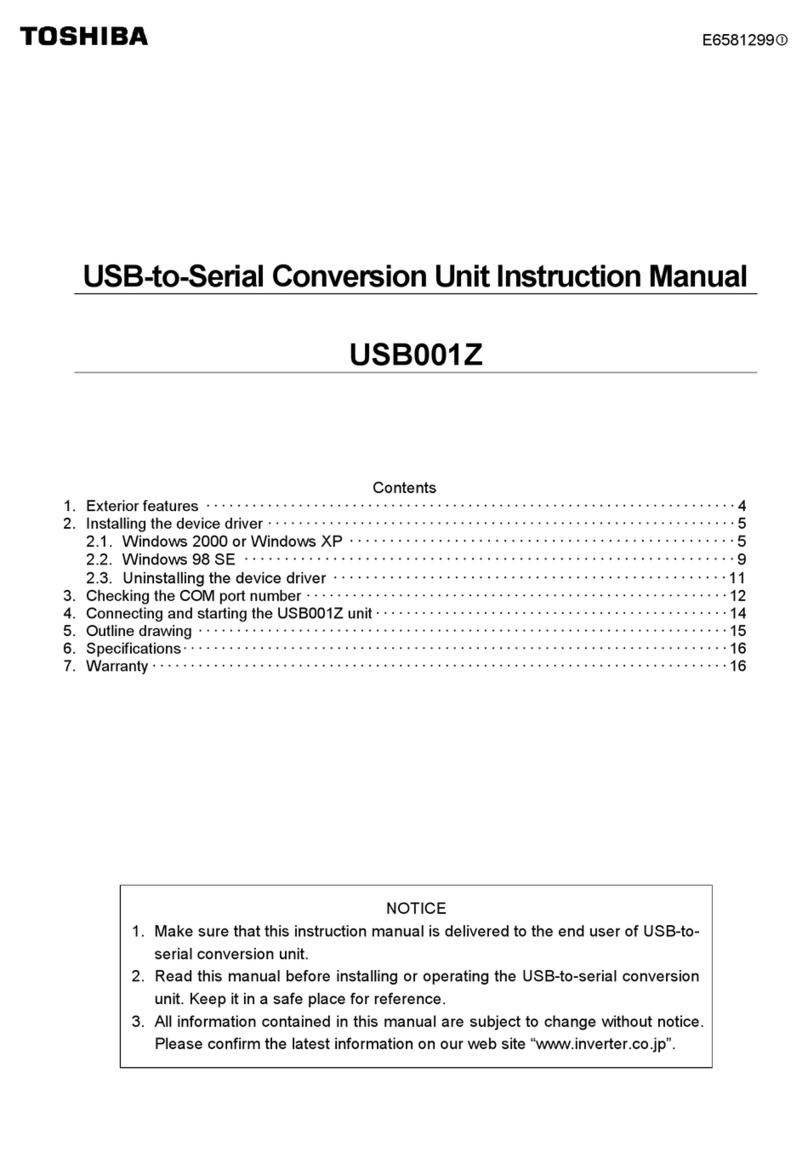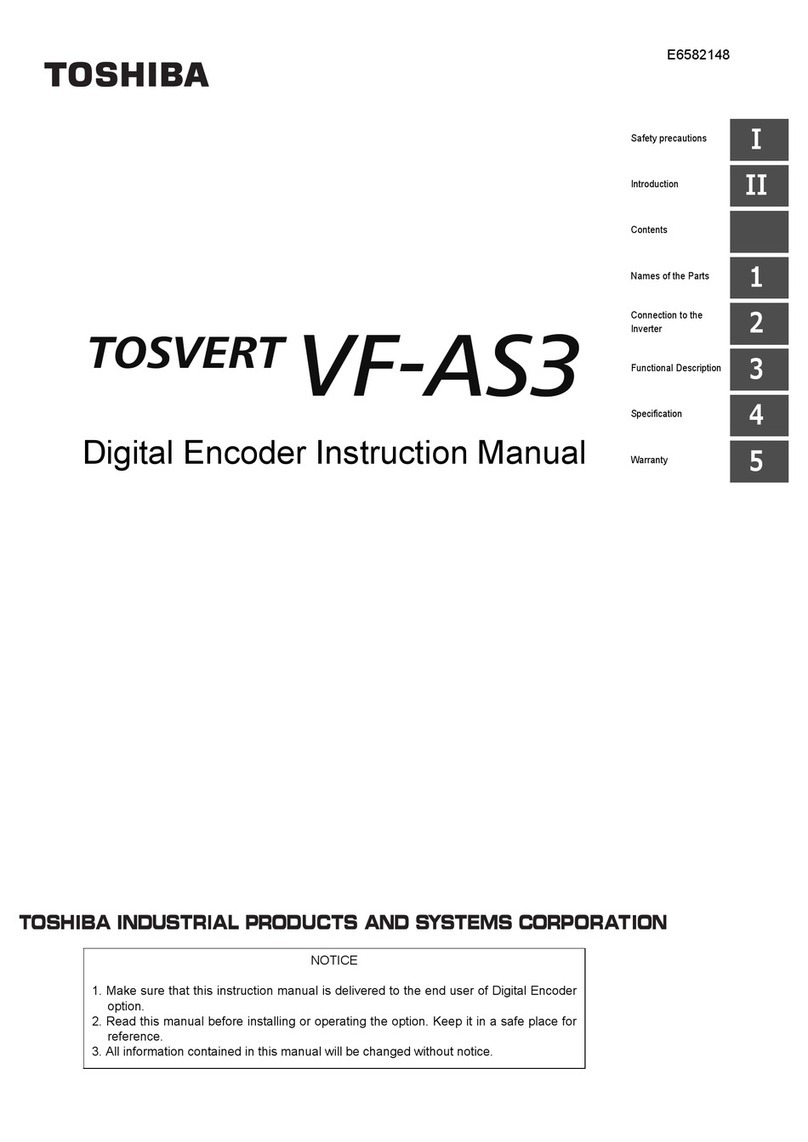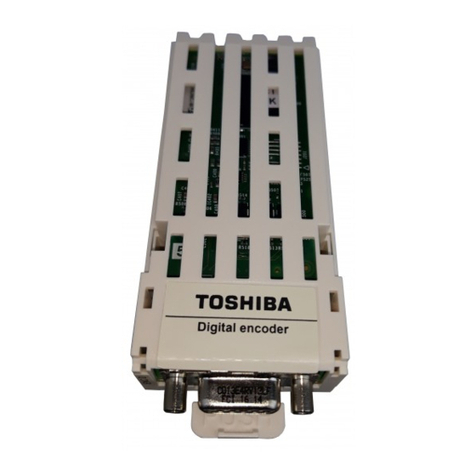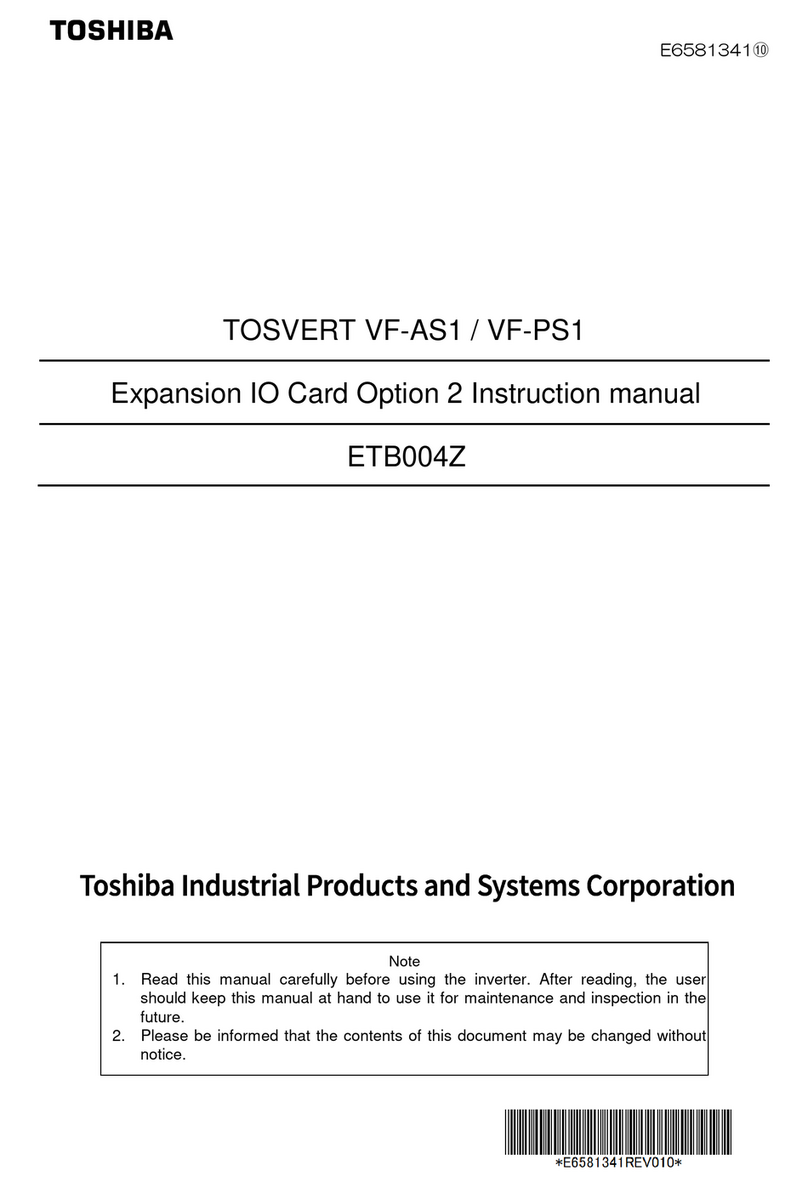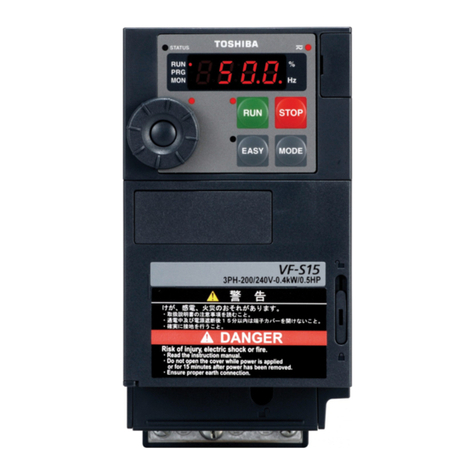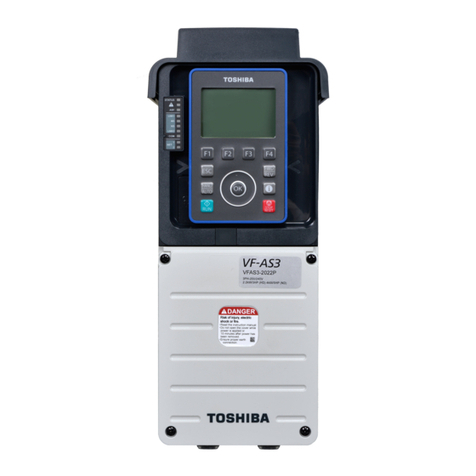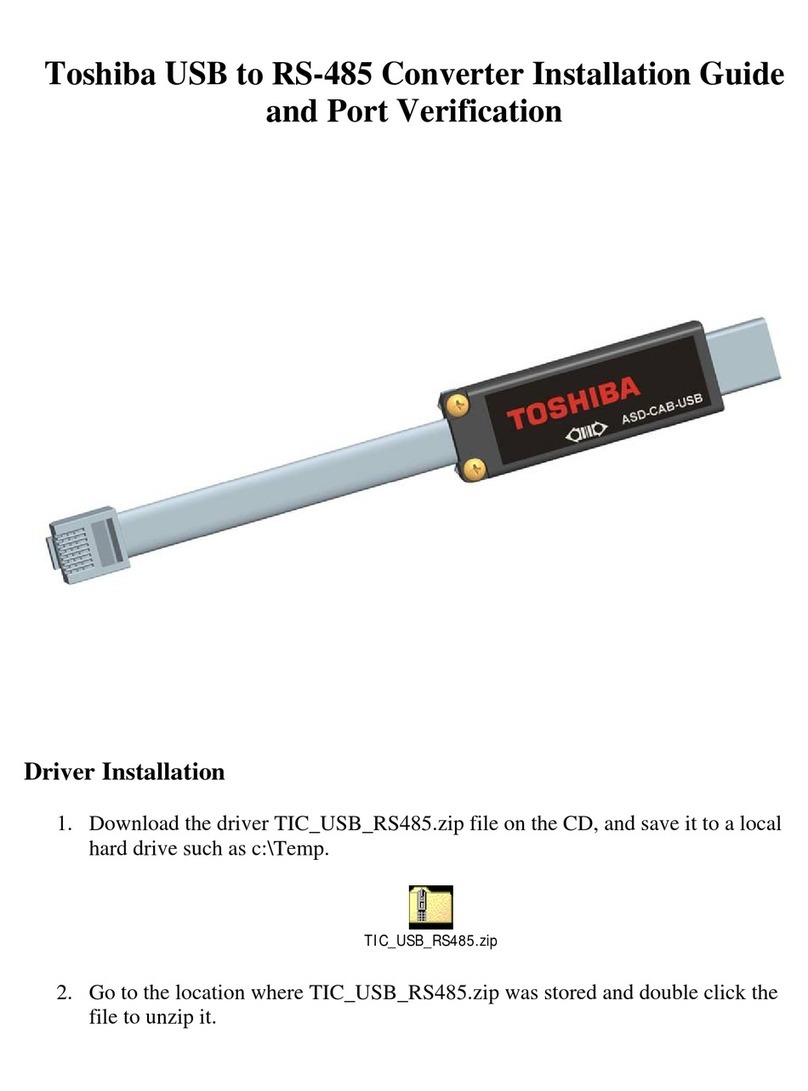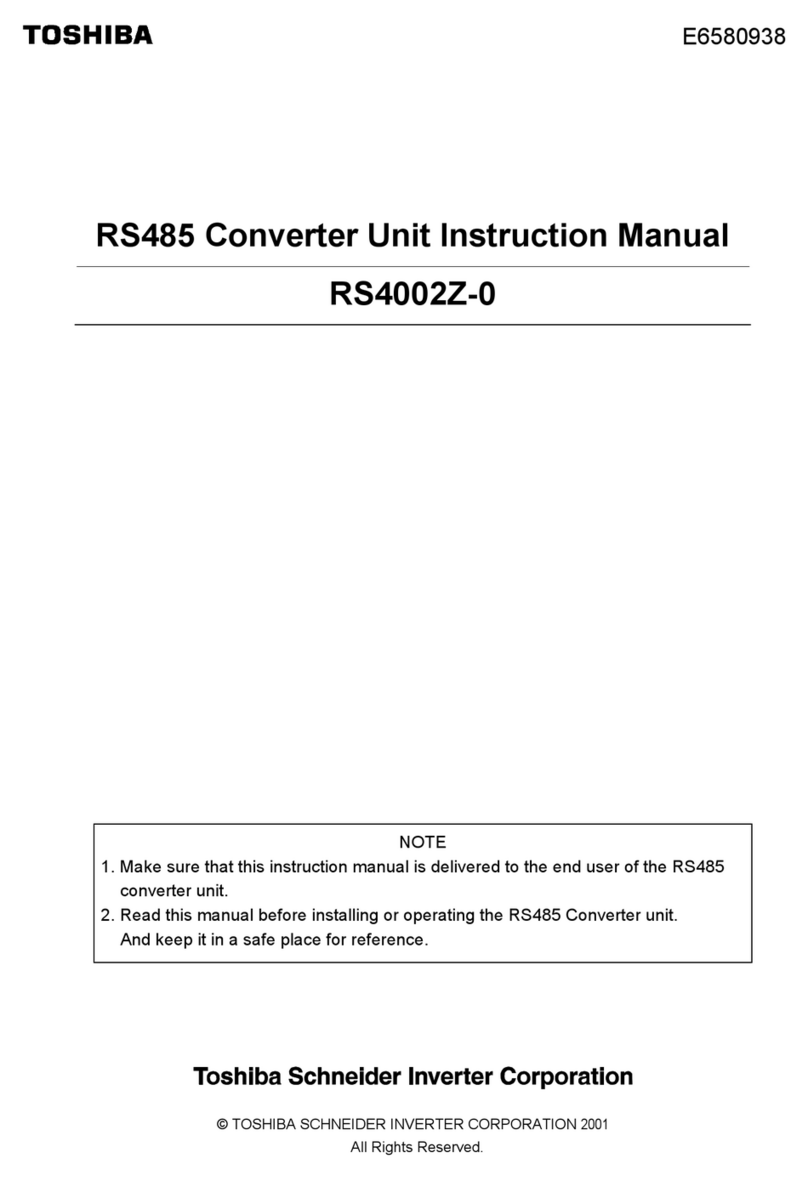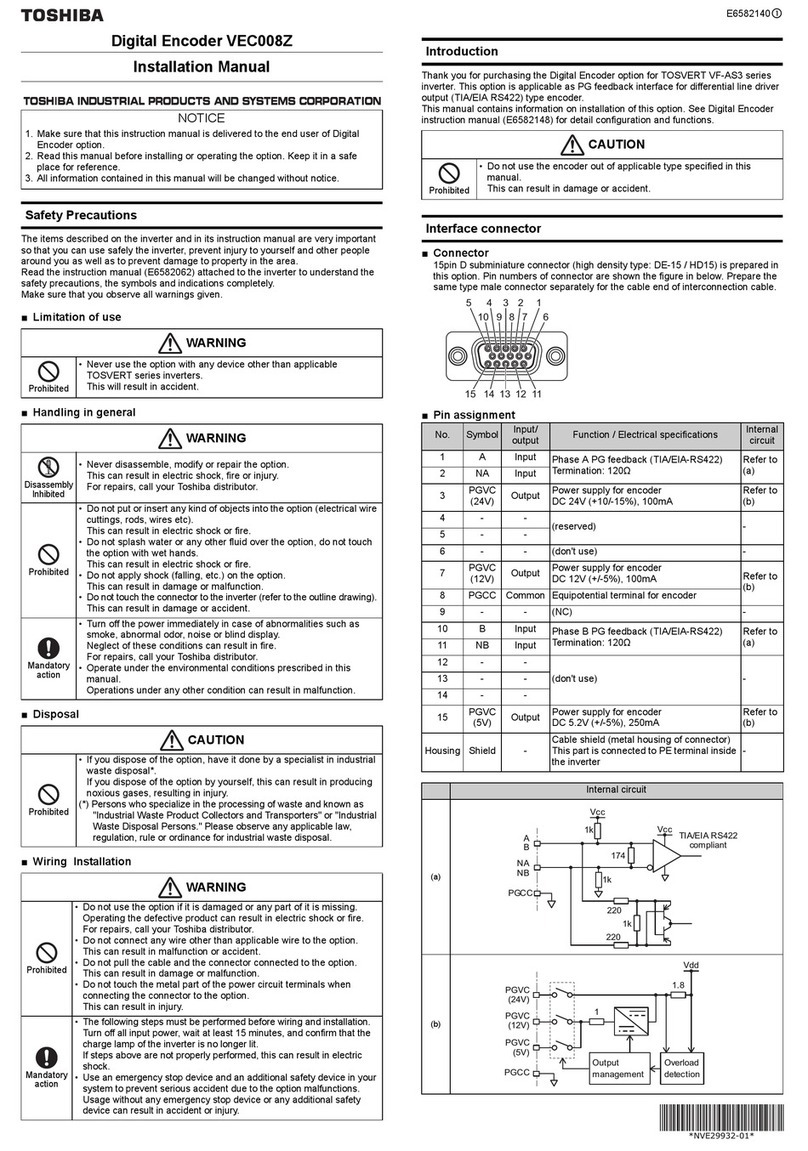
E6581657
2
Contents
1. General outlines of the communication function ......................................................................................................... 3
2. Data transmission specifications................................................................................................................................. 4
3. Communication protocol ............................................................................................................................................. 5
3.1. About the handling of received frames ............................................................................................................. 5
4. TOSHIBA Inverter Protocol......................................................................................................................................... 6
4.1. Data transmission format.................................................................................................................................. 7
4.1.1. Data transmission format used in ASCII mode .....................................................................................7
4.1.2. Data transmission format used in binary mode ................................................................................... 10
4.1.3. Transmission format of Block Communication .................................................................................... 13
4.2. Commands..................................................................................................................................................... 17
4.3. Transmission errors........................................................................................................................................ 19
4.4. Broadcast communication function................................................................................................................. 20
4.5. Examples of the use of communication commands........................................................................................ 22
5. MODBUS-RTU protocol............................................................................................................................................ 23
5.1. MODBUS-RTU transmission format ............................................................................................................ 24
5.1.1. Read command (03H)......................................................................................................................... 25
5.1.2. Block Read command:Indirect (03H)................................................................................................ 26
5.1.3. Block Read command:Direct (03H) .................................................................................................. 28
5.1.4. Write command (06H , 10H) ............................................................................................................... 30
5.1.5. Block Write command (10H) ............................................................................................................... 32
5.1.6. Block Write and Read command (17H)............................................................................................... 34
5.1.7. Identification command (2BH)............................................................................................................. 36
5.2. CRC Generation............................................................................................................................................. 38
5.3. Error codes..................................................................................................................................................... 39
6. Communication parameters...................................................................................................................................... 40
6.1. Baud rate(f800) , Parity (f801)............................................................................................................. 41
6.2. Inverter number(f802) ...............................................................................................................................41
6.3. Communication time-out detection (f803) (f804) (f808) ................................................................. 42
6.4. Free notes(f880) ....................................................................................................................................... 42
7. Commands and monitoring from the computer......................................................................................................... 43
7.1. Communication commands (commands from the computer) ......................................................................... 43
7.2. Monitoring from the computer......................................................................................................................... 46
7.3. Utilizing panel (LEDs and keys) by communication ........................................................................................ 54
7.3.1. LED setting by communication............................................................................................................ 54
7.3.2. Key utilization by communication ........................................................................................................ 57
8. Parameter data ......................................................................................................................................................... 58
Appendix 1 Table of data codes ........................................................................................................................................ 61
Appendix 2 Response time ............................................................................................................................................... 62
Appendix 3 Type and Form ............................................................................................................................................... 63
Appendix 4 Troubleshooting....................................................................... エラー! ブックマークが定義されていません。
Appendix 5 Connecting for RS485 communication ........................................................................................................... 65
efesotomasyon.com -Toshiba inverter,drive,servo,plc

